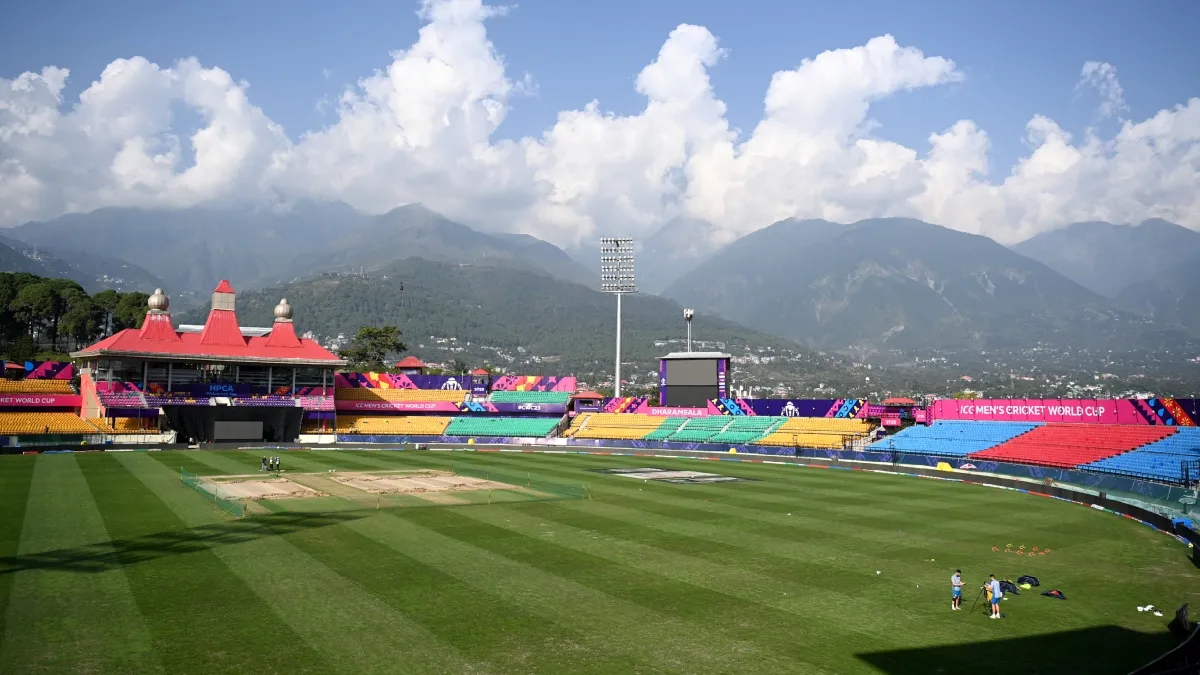What is a hybrid pitch as Indian cricket embarks on new innovation? How is it different from natural turfs?
India's first hybrid pitch was unveiled at the Himachal Pradesh Cricket Association (HPCA) stadium in Dharamsala. The hybrid pitches are an innovation in Indian cricket. Know what are hybrid pitches and how are they different from a natural pitch.

Indian cricket embarks on a new innovation as the nation's first-ever hybrid pitch was unveiled at the Himachal Pradesh Cricket Association (HPCA) stadium in Dharamsala on Monday. The hybrid surface was unveiled in a grand ceremony and the event was attended by IPL Chairman Arun Dhumal and other cricket dignitaries including Paul Taylor, who is an ex-England player and SIS's international cricket director.
Hybrid pitches are combination of natural and synthetic fibres
The new type of hybrid pitches is a combination of natural turf and synthetic fibres. These types of pitches have only 5% of synthetic fibres with 95% being the natural turf only. The synthetic fibre gets injected into the natural surface.
These pitches promise to enhance the durability and consistent playability of matches. This also promises to reduce the strain and workload on the ground staff and will also maintain quality playing conditions.
"The introduction of hybrid pitches is set to revolutionize cricket in India, following their success in iconic venues like Lord's and The Oval in England," said Dhumal, who hails from Himachal Pradesh.
Notably, Taylor looks forward to more projects in Mumbai and Ahmedabad. "With the ICC's approval, we're excited to see the positive impact these pitches will have on the sport, starting with installations in Mumbai and Ahmedabad next," Taylor said.
ICC has sanctioned the hybrid pitches for T20s and ODIs and there are plans to use them on England’s county cricket grounds.
How are hybrid pitches different from natural ones?
According to Paul Taylor, the work required to renovate a pitch in between games will get much reduced on these surfaces. "The preparation of a hybrid pitch is no different to a fully natural pitch.
They're prepared in exactly the same way.
What you'll find, though, is when you finish the game on them, the amount of renovation work you need to do before the next game is massively reduced. So that's where less pressure is put on the ground staff. You can play on it up to three times longer than what you ordinarily would on a natural turf pitch," he said.
The challenge will be to recreate the different behavioural patterns that we see on a natural surface as the match progresses further to the hybrid turfs. Taylor said that the characteristics won't change fundamentally and one can control the pitch as per the need.
"You can control playing characteristics (on the hybrid pitch) as they don't change fundamentally. You can control the amount of moisture that goes into the pitch. If you want to play on a dry pitch, you can play on a dry pitch. If you want to leave more grass on, you can do that," he added.
So will the ball spin? "The ball will spin. What we have actually found anecdotally is that spin bowlers over a period of time will get more bounce out of the hybrid pitch than what they ordinarily would off a natural turf pitch," he said.
The playing conditions change over time but Taylor said the pitch can be controlled even when the conditions will change game after game. "Yes, the playing conditions still vary over time. But you're still in control of what sort of works for you on a pitch. So, you might play on a new hybrid pitch for one game. And the playing characteristics are slightly different. But game two, three, four, five…the conditions will change. You can still control those conditions,” said Taylor.